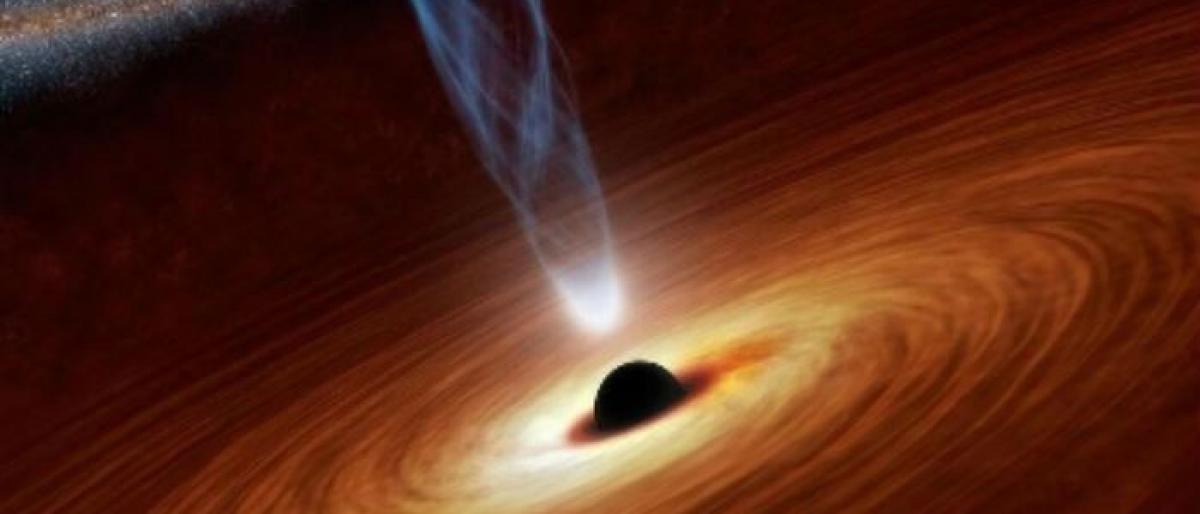Signs of supermassive black hole mergers found

Scientists have found evidence for a large number of double supermassive black holes, likely precursors of gigantic black hole merging events The research, published in the journal Monthly Notices of the Royal Astronomical Society, confirms the current understanding of cosmological evolution which galaxies and their associated black holes merge over time, forming bigger and bigger galaxies and
Scientists have found evidence for a large number of double supermassive black holes, likely precursors of gigantic black hole merging events. The research, published in the journal Monthly Notices of the Royal Astronomical Society, confirms the current understanding of cosmological evolution -- which galaxies and their associated black holes merge over time, forming bigger and bigger galaxies and black holes.
Astronomers from the University of Hertfordshire in the UK and colleagues looked at radio maps of powerful jet sources and found signs that would usually be present when looking at black holes that are closely orbiting each other. Before black holes merge they form a binary black hole, where the two black holes orbit around each other.
Gravitational wave telescopes have been able to find evidence of the merging of smaller black holes since 2015, by measuring the strong bursts of gravitational waves that are emitted when binary black holes merge. However, current technology cannot be used to demonstrate the presence of supermassive binary black holes. Supermassive black holes emit powerful jets. When supermassive binary black holes orbit, it causes the jet emanating from the nucleus of a galaxy to periodically change its direction. Astronomers studied the direction that these jets are emitted in, and variances in these directions.
They compared the direction of the jets with the one of the radio lobes (that store all the particles that ever went through the jet channels) to demonstrate that this method can be used to indicate the presence of supermassive binary black holes. "We have studied the jets in different conditions for a long time with computer simulations," said Martin Krause from the University of Hertfordshire. "In this first systematic comparison to high-resolution radio maps of the most powerful radio sources, we were astonished to find signatures that were compatible with jet precession in three quarters of the sources," Krause said.
The fact that the most powerful jets are associated with binary black holes could have important consequences for the formation of stars in galaxies; stars form from cold gas, jets heat this gas and thus suppress the formation of stars. A jet that always heads in the same direction only heats a limited amount of gas in its vicinity, researchers said. However, jets from binary black holes change direction continuously. they said. They can heat much more gas, suppressing the formation of stars much more efficiently, and thus contributing towards keeping the number of stars in galaxies within the observed limits.
















